
Over the years of my career so far, I've found a small number of posters that deserve space on my classroom walls. Like any tool, these posters act as multipliers of the skill and understanding I bring to bear in using them. If I don't deeply understand what they mean and how to develop that understanding in the minds of my learners, they are mere decorations. But if I work hard to understand them and use them in my instruction, they become powerful signals of what we're after in my classroom.
The posters below are not magical; they are simply physical signals that support the verbal and non-verbal signals I seek to consistently and meaningfully send to my students.
Here are the basic posters I use in my classroom. I recommend making these posters yourself using sticky chart paper and Sharpies, or for a select few posters, you can purchase them via my new merch store.
Your Everest Statement
This is where it all begins and ends for me. What, in a single sentence, is the work we do in my classroom all about? This sentence helps me de-stress after a day of failures, it helps me stay the course when things are going well, and it helps me implement strategies like Define Success and Mini-Sermons. It's easily the most important classroom poster I've ever made, and I'm proud of how it's yellowed over the years.
For a detailed treatment of how to make and use an Everest Statement, here's everything you need to know.
Do hard things.
This is the core ethos of my classroom, hence all the writing I've done about it (see below). It helps me cultivate each of the Five Key Beliefs. It's been central to my approach to teaching since I started teaching. To get a thorough sense of it, see the following:
- Pp. 42, 57-58, 99, & 180 of These 6 Things
- Pp. 170, 230, & 238 of The Will to Learn
- Article: “How to Do Hard Things”
- Article: “High Expectations: An Ingredient, Not a Meal”
- Article: “Who’s Got It Better Than Us?”
- Article: “The Snowball”
- Article: “‘Overachievers' and the Tyranny of Low Expectations”
- Article: “The Pedagogical Benefits of Doing Hard Things”
- Article: “Gotta Want It, Gotta Do It: The Motivational and Executional Hurdles to Student Success”
- Article: “Future You Wants You To Do Two Things”
- Article: “Your Students Want to Master What You’re Teaching Them”
- Article: “The Imperative Nature of Deliberate Practice”
Want to purchase this poster and support this blog? Click here.
The bell is our boss.
This one comes from Strategy #3 in The Will to Learn: manage class time well with gentle urgency. This helps with Credibility.
- Urgency: One the one hand, “the bell is our boss” indicates that I take our use of time seriously. There's more at play here than just our personal preferences. We've got work to do, and that work is important for both our short- and long-term flourishing.
- Gentle: But then again, we are human beings. As I facilitate an enjoyable and productive “bell to bell” learning experience, I keep an awareness of the levels of energy and engagement in the room. I want the whole “bell to bell” time period to be productive — sometimes that looks like 60 minutes of grind, but more often it's a dance between different types of work. One of those types is enjoying one another and the chance to be together. But through all of it, the fact remains: the bell is our boss.
Want to purchase this poster and support this blog? Click here.
It's not personal. It's business.
This one's important for helping my students unpack outcomes, good or bad, without letting those outcomes undermine their Efficacy and Belonging beliefs. Taking assessment results personally is a huuuuuuuuuuge obstacle to student motivation, even amongst students who appear well-motivated.
For more on this idea, see “Using the Godfather to Help with Belonging.”
Want to purchase this poster and support this blog? Click here.
Classroom Management Rules
In this article, I provide a comprehensive guide in setting yourself up for a well-managed classroom. I explain how each of these rules does a lot of work in ensuring my classroom is an enjoyable and productive space.
- Listen and follow directions. This rule allows me as a teacher to direct student energies toward productive ends.
- Raise your hand before speaking or leaving your seat. This rule allows me to have some control over the airspace of my classes of 30+ students. In the past, I've experimented with leaving this rule out, instead teaching my students to monitor their own voices and be aware of the others in the room. I have found that this is not something I can reasonably expect 30+ adolescents to be proficient at. If I don't have this rule, then even one to three “blurt-prone” students in a room of 30+ can significantly reduce the enjoyability and productivity of the learning environment.
- Keep hands, feet, and objects to yourself. I teach ninth graders, so I do not feel a need to explain why this rule is needed. I will say again, though, that even one to three students disregarding this boundary on a given day can significantly reduce the enjoyability, productivity, and sense of safety in a lesson.
- Respect your classmates and your teacher. When situated amongst the other rules, I can be specific when I'm addressing a problem with respect. For example, if I'm facilitating a Pop-Up Debate and a student is making faces across the classroom at a peer, that student can argue that they are listening and following directions (because I've probably not said “don't make faces across the room”) and so on. But despite this, there is still a problem — they are doing something that indicates a lack of respect for the student who is speaking.
- Use technology as indicated. Technically, this is a repeat of Rule #1. But because of the many problems that can come up as soon as a Chromebook turns on, I find it helpful to address technology in its own rule.
Want to purchase this poster and support this blog? Click here.
Knowledge x Practice x Time = Mastery
In These 6 Things, I argued that certain kinds of work are critical for students to grow toward mastery. The good news for simple-minded folks like me is that these kinds of work are not limitless; in fact, I argue that there are six kinds of work (six things, see?) that teachers in any content area can internalize, practice, and master facilitating in their classrooms, to great effect.
This poster is related to that idea, but rather than being a 50,000 word book written for teachers, it's a handful of words on a poster written for students. What I'm trying to help them see, day after day, is that growing toward mastery is possible for anyone. All that it takes is building knowledge, practicing with that knowledge, and doing so day after day.
That's the whole idea. (For the origin story of this poster idea, see this article: “The Expert Equation.”)
Want to purchase this poster and support this blog? Click here.
The Rainbow of Why
Since The Will to Learn came out, the most common piece of praise I receive is, “I love the Rainbow of Why.” (Fun fact: I used to call it the Value Palette, but then our colleague Doug Anderson referred to it as the Rainbow of Why during a PD I was leading on the topic in Lindon, UT. The name stuck — and Doug has a shout-out in the book for his naming genius!)
So why do folks love this graphic so much? I see a couple of reasons:
- It's pretty. Because the color spectrum just is.
- It's inspiring. Because it reminds us teachers of just how many ways there are to Value a subject.
- It's useful. For example, it helps with Valued Within exercises and Mini-Sermons.
So for the first time ever, I'm putting this on my wall this year. Why? Because folks have written in saying that they use this graphic with their students, and I've got to try it!
Want to purchase this poster and support this blog? Click here.
I also made a Rainbow of Why coffee mug because…well, I just thought it was pretty. I wanted one. You can get one, too, here.
PVLEGS
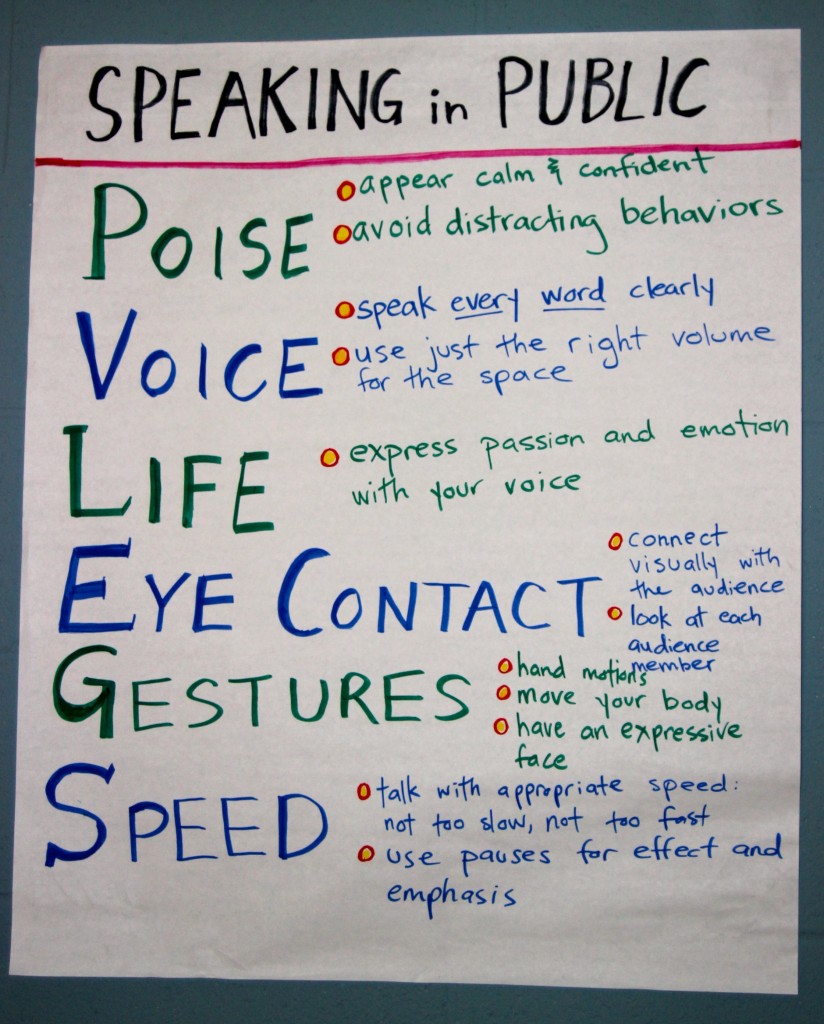
PVLEGS is a tool developed by Erik Palmer for teaching speech delivery to students. I wrote about it at length in These 6 Things (pp. 34, 120, 224-225) and in this article. PVLEGS is also featured in the DSJR Guide to Pop-Up Debates article I completed recently. It is indispensable for Woodenizing the improvement of students speaking.
Pop-Up Debate Rules
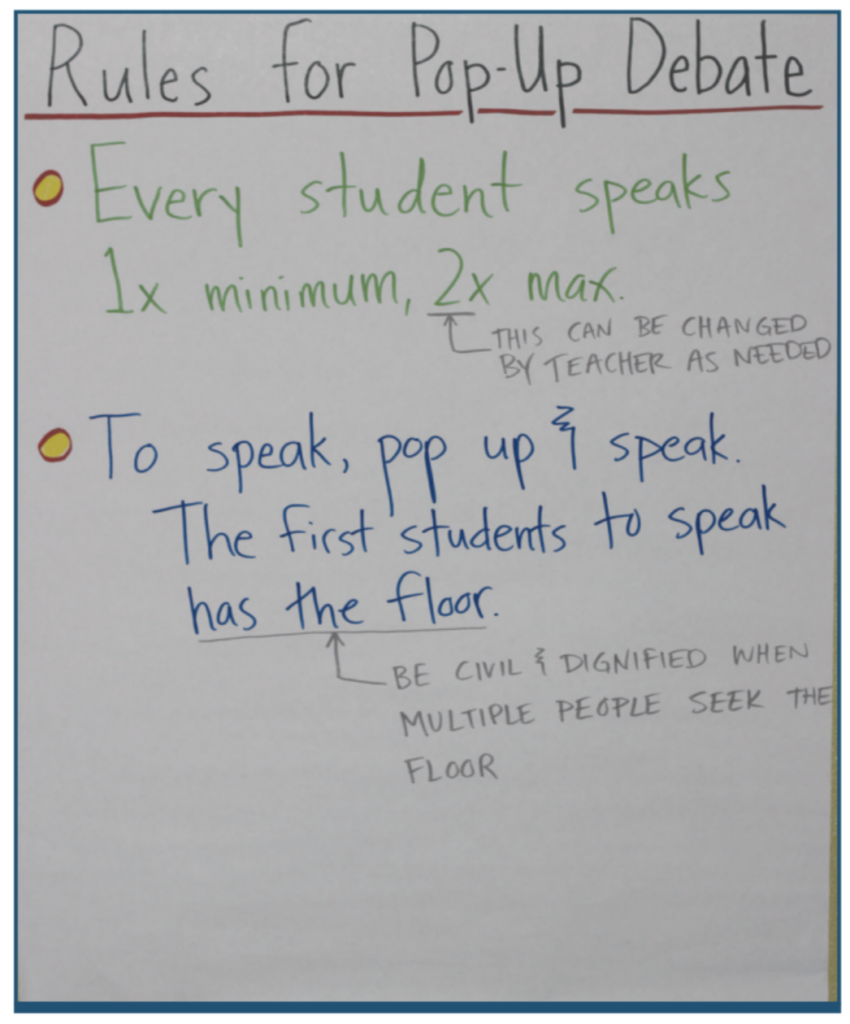
Pop-Up Debate was my favorite learning mode in my classes last year. I've written about it extensively in These 6 Things (see pp. 114-116, 111-112, 72-73, 213, 219-221, and so on), and recently I created a comprehensive DSJR Guide on it here.
What posters are central to your classroom?
Share them with the community in the comments below!
Teaching right beside you,
DSJR
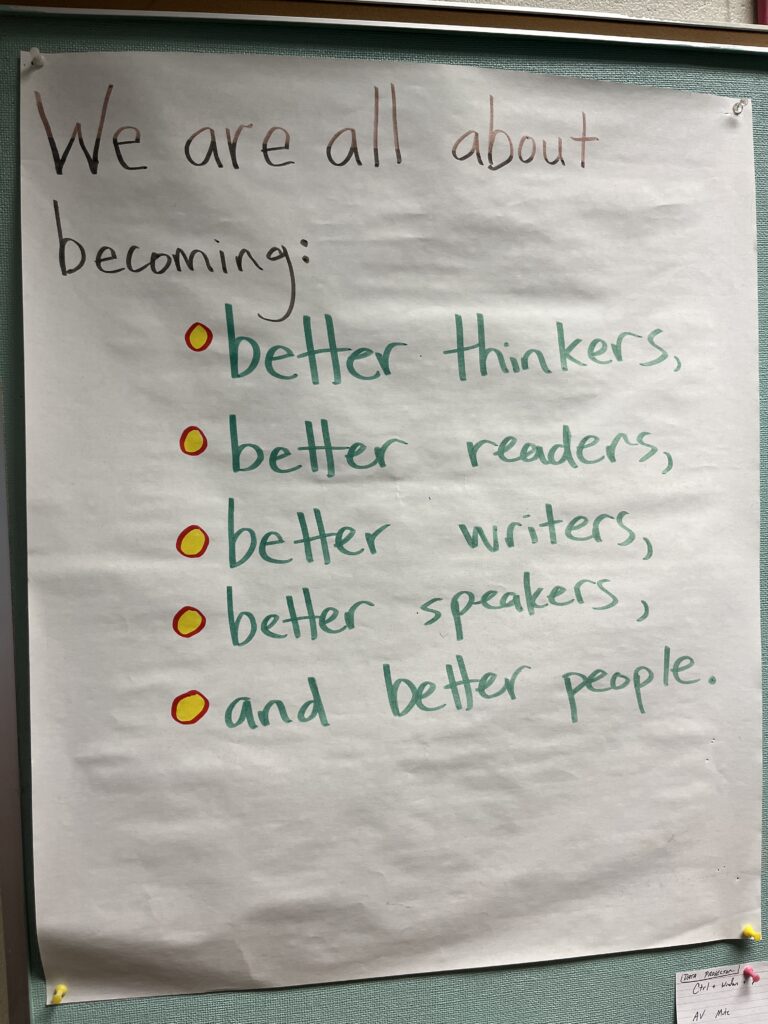

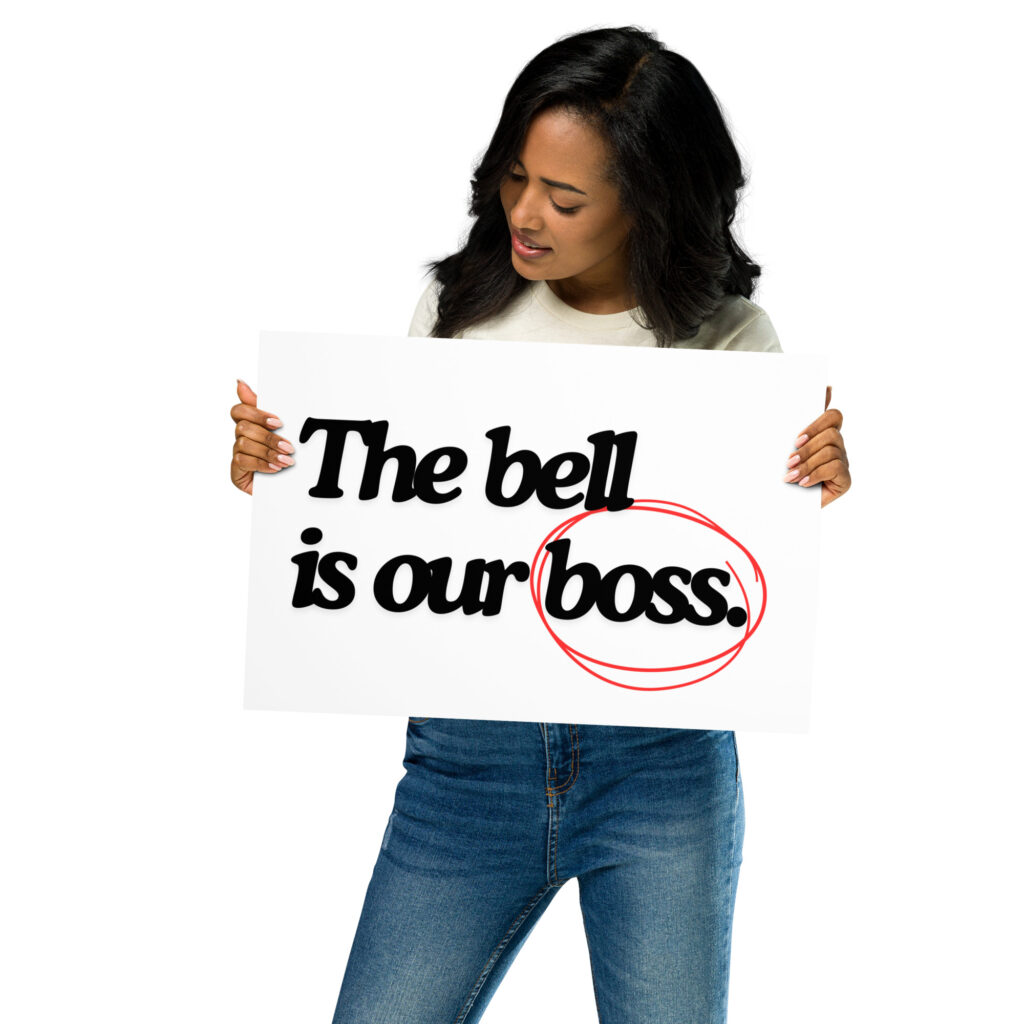
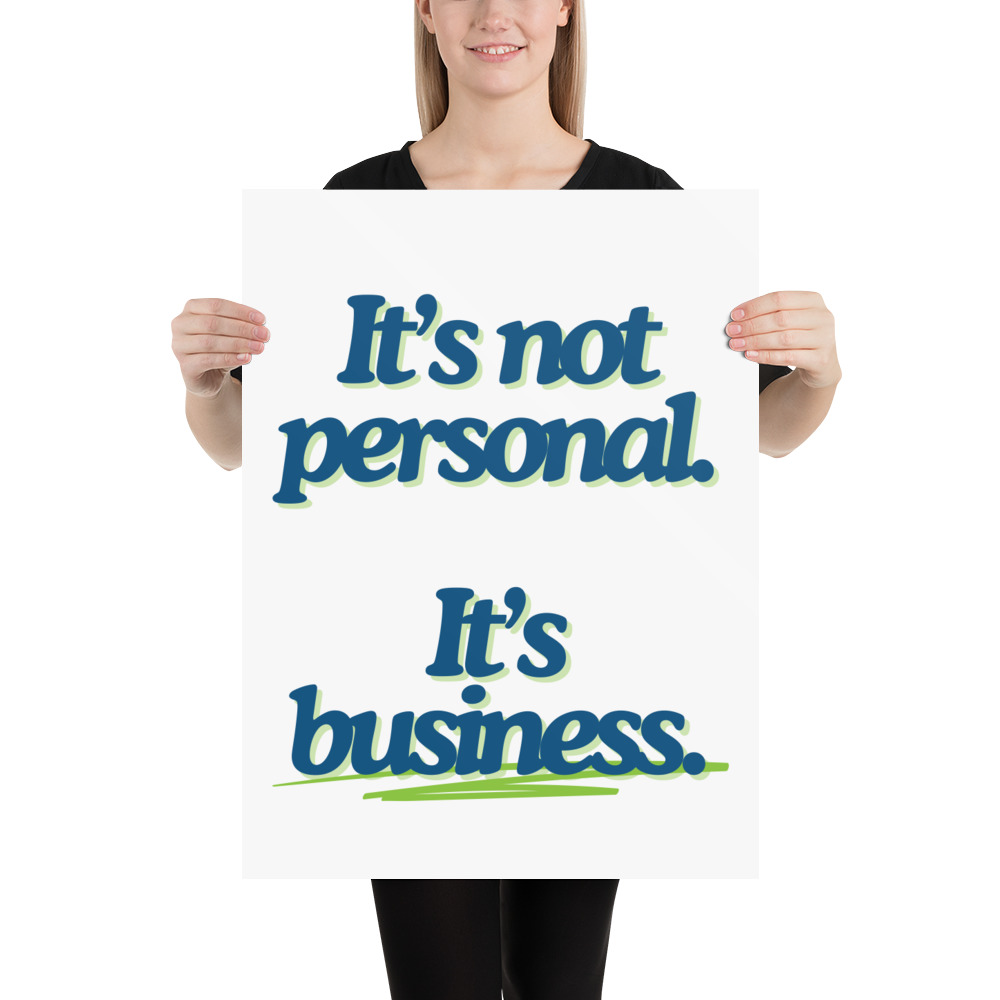

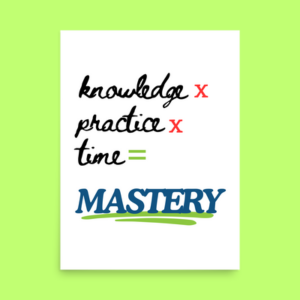
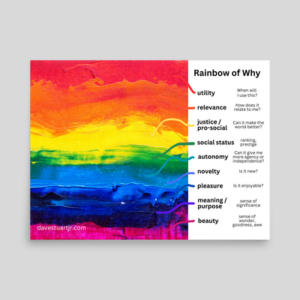
Dave Stuart Jr. says
Warren, you are right – links are missing right now. When Etsy opens my store (any day now), it’ll be available here: https://davestuartjr.com/etsy
Dave Stuart Jr. says
Warren, it’s live! Check it out: https://davestuartjr.com/etsy
Martin Hogue says
6-8gr SS
Posters
Icons: Frederick Douglas, JFK, MLK, Mandela, Malala
Innovators: Einstein, Wright Bros
Events: Washington crossing the East River (thanks to fog), First flight at Kittyhawk, D-Day, Tank man at Tiananmen
Square
Everest statement:
Let us dare to read, think, speak, & write. – John Adams
Quotes:
Golden Rule!
GRIT- talent x effort =skill but effort counts 3x
Progress NOT Perfection
It’s the Process NOT the Product
Dave Stuart Jr. says
Love these, Martin!
Terri Egan says
I have simple posters that clarify the skills of scanning, skimming, and close reading so that we can refer to them throughout the year as we determine which skill is needed for each assignment. This is a reading skill I’ve found that needs explicit instruction for even older students; many do not realize that there are differences.
Dave Stuart Jr. says
Terri, love these! And: good to hear from you, colleague